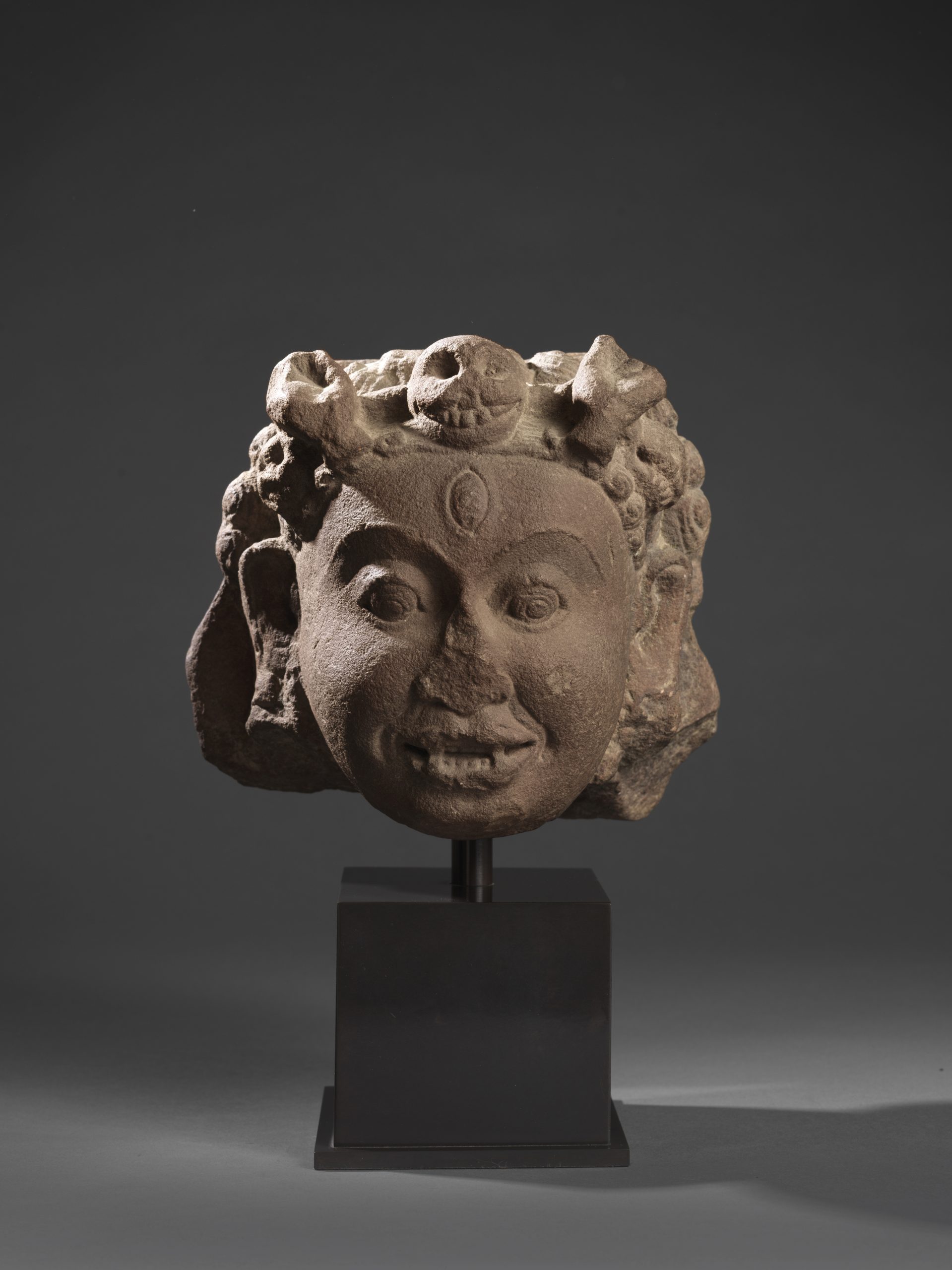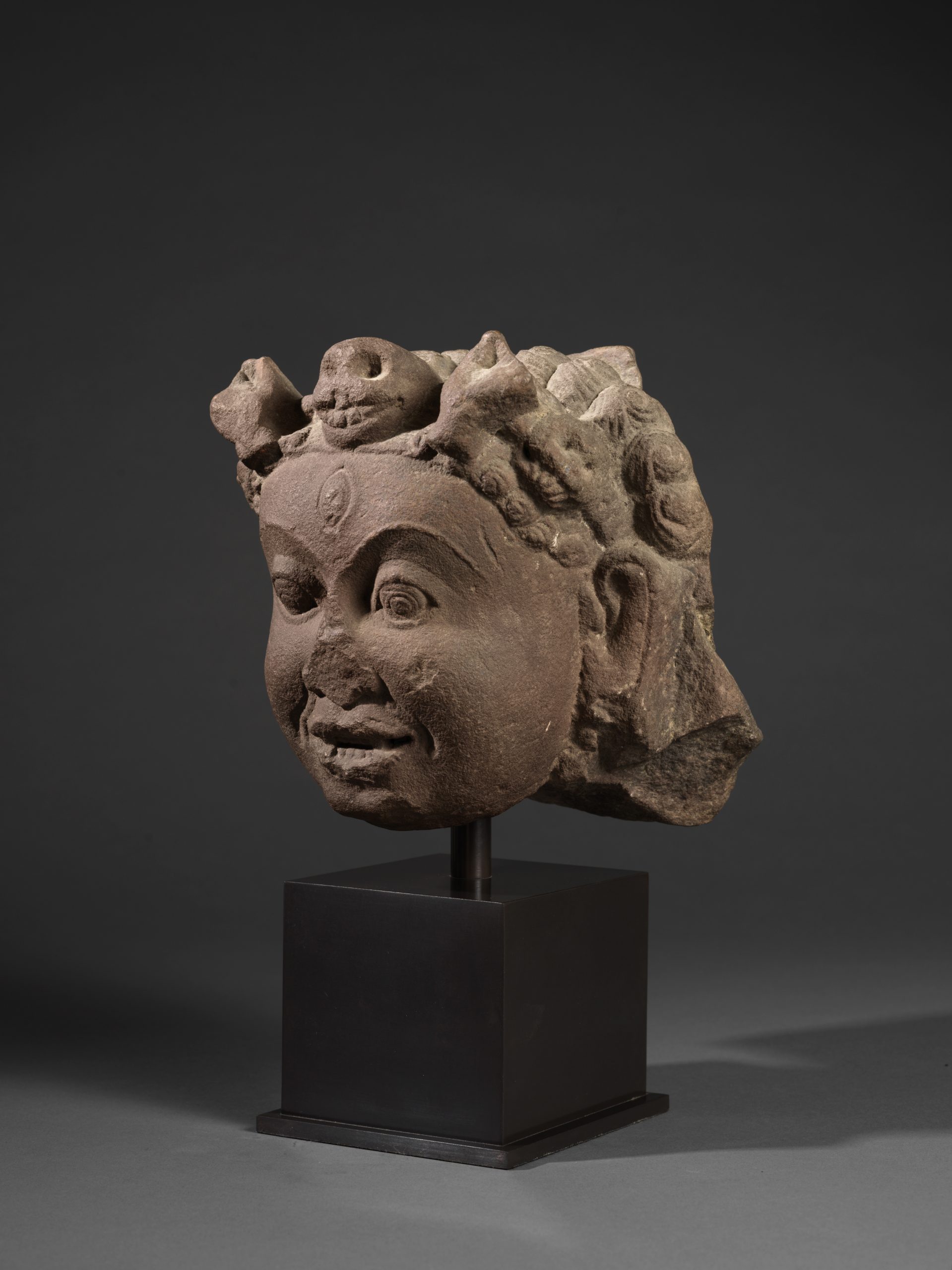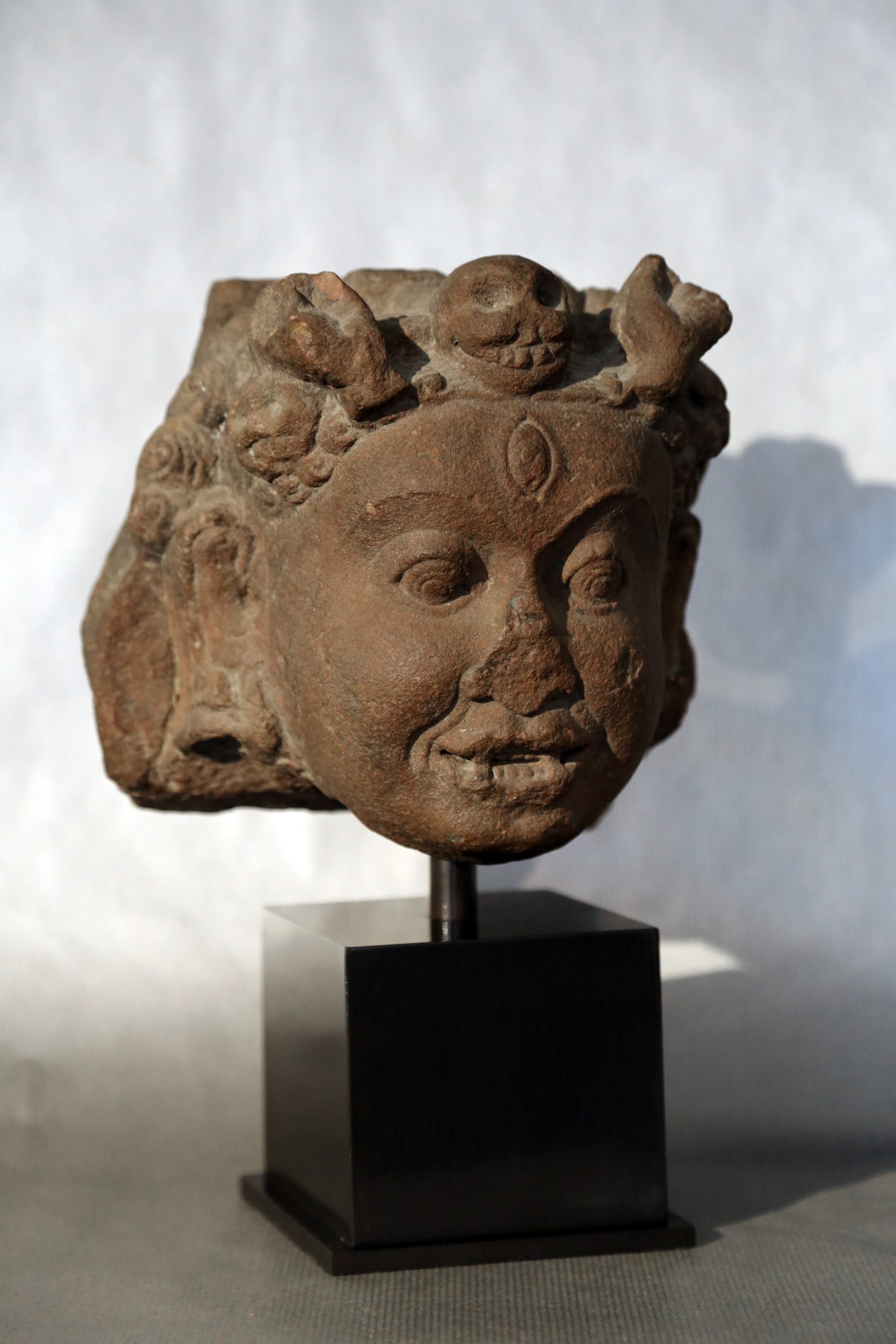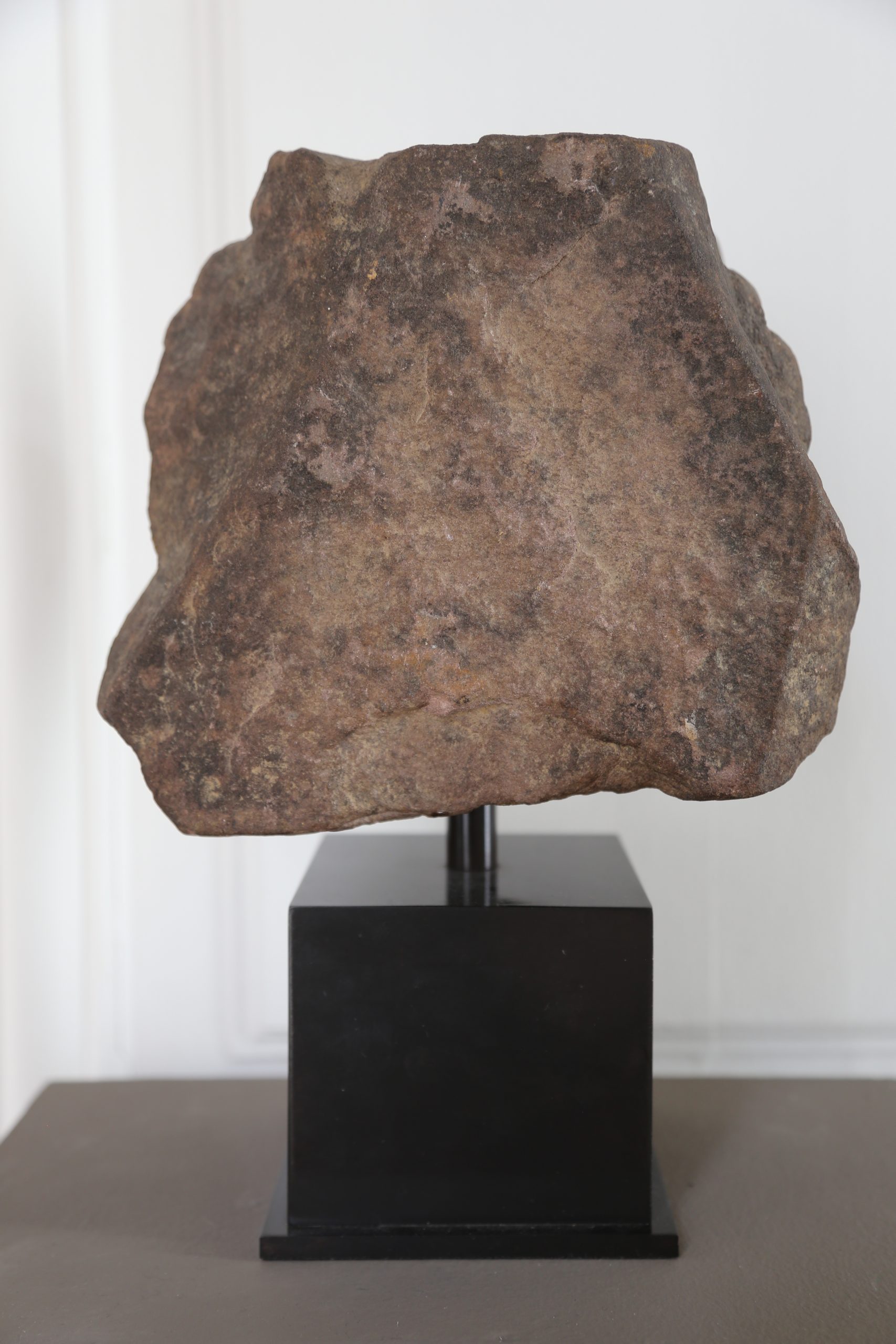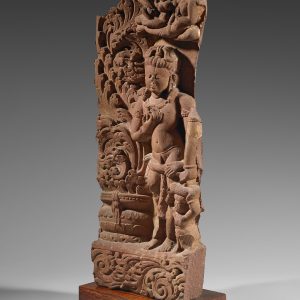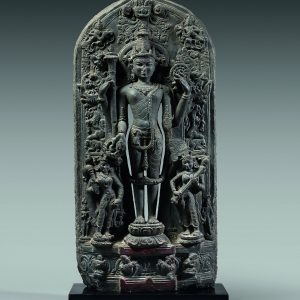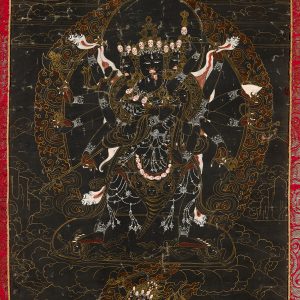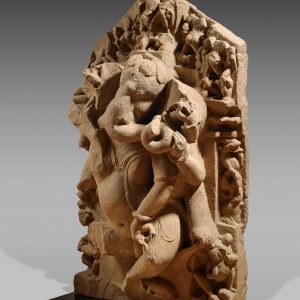Head of Kālī
Description
The iconography of a wrathful deity
Expression of the complex and ambiguous nature of Śiva, with bulging eyes, dilated pupils, the forehead surrounded by a diadem of heads (kapāla) and severed hands (chinnahasta), this figure could represent the feminine deity Kālī(“the black one”). This fierce figure (ugra) incarnates one of the multiple manifestations of the Great Goddess also called Mahādevī, consort of Śiva and mother of the Trimūrti, at the origin of all creation. The presence of a third eye is no doubt a fierce counterpart, personified energy (Śakti) of Śiva. As for the hair, treated in curls on the forehead and in the hairstyle, attests to the feminine character of this figure, potentially dismissing the identity of Bhairava, more represented with a bun (jaṭā-mukuṭa). Her association with the world of the dead, if not with the world of warlike forms, is confirmed by the imposing tiara of severed heads and hands, symbols of liberation from evil and vanity.
A witness to the doctrinal evolutions in Northern India
Kālī is particularly popular in northern India, where she remains one of the most worshiped deities in Bengal. Mentioned in Devī-māhātmyam as early as the 6th century, she appears during a battle between divine and demonic forces. The gods called upon her when they could not defeat the demon Raktabīja whose every drop of blood that fell to the ground gave birth to a new demon. In the battle against Raktabīja, after appearing from the third eye of Durgā, she used her tongue to prevent the demon’s blood from falling to the ground and managed to triumph over evil. Since then, Kālī is considered one of the most powerful forms of Śakti, or Mother Goddess who is believed to restore the balance between the forces of good and evil through destruction. Her identity is more associated with the mass grave, evoked by the representation of severed heads and hands placed in front of the hair.
A post-Gupta aesthetic
Pink sandstone is a stone particularly present in central and northern India (Uttar Pradesh ; Madhya Pradesh) where a post-Gupta aesthetic continues during the medieval period, marked by full and round shapes, a tendency to essentialized forms, chubby faces, eyebrows incised in a thin graphic line, characteristics that can be seen flourishing throughout the period of Gurjara Pratihara (730-1027) as well as Rashtrakuta (750-973). This spectacular head fits perfectly into this context.
Provenance: Collection Eskenazi, Milano, 1983.
Collection Marco Polo Gallery Paris.
Sotheby’s London, 21 October, 1993, lot 542.
Sotheby’s New York, 24 september, 1997, lot 175.
Publication : Eskenazy, Sculture dell’India ClassicaIV secolo a.C-XI secolo d.C, catalogue, Milano, 7 April -7 May 1983, p. 91, lot 67.

